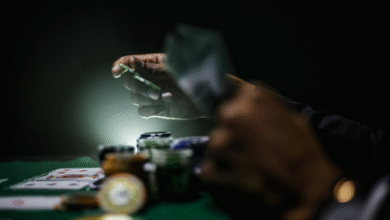How Slot Game Designers Balance Creativity with Payout Logic

Have you ever played a slot game that looked so beautiful and fun that you almost forgot it was about winning money?
That’s not by chance. It’s the result of careful work by game designers who mix creativity and payout logic in a way that keeps players happy and excited. Behind every colorful reel and catchy tune, there’s a lot of planning that makes the game both entertaining and fair.
The Art and Logic Behind Slot Games
Every slot game starts with two main ideas: how it should look and how it should pay. Creativity gives the game its visual charm, characters, music, and story, while payout logic ensures players get fair and exciting rewards. The real skill of a game designer is in finding the right balance between both.
If the game is too focused on payout, it might feel too serious. But if it’s only about looks, players might lose interest. Designers work to make sure the visuals, animations, and sounds make players feel connected, while the payout structure keeps the fun real and consistent.
Building the Visual Experience
The first thing players notice in any spaceman slot game is the design. From bright symbols and smooth animations to catchy background music, everything is built to set a mood. Designers want the game to feel enjoyable and easy on the eyes. The theme could be based on adventure, festivals, nature, or even food; each one brings its own emotion.
Color plays a big part, too. Warm shades like gold and red create excitement, while cool shades like blue or green make things calm and relaxing. These choices are not random. Designers study how colors and shapes affect mood to create a game that feels comfortable and joyful to play.
Creating Sound That Feels Rewarding
Sound effects are another important part of the creative process. Every spin, win, or bonus event has a sound that makes it memorable. That “click” when you press spin, the cheerful tune after a small win, or the background music during bonus rounds are all designed to lift your mood.
Designers use sound to create rhythm. It helps players feel involved and gives a sense of flow. Even when the result is not a big win, the cheerful music or animation can make the moment enjoyable. That’s why many players say they play for the experience, not just the prize.
Understanding Payout Logic
Payout logic is the structure that controls how rewards are given in a game. It decides how often wins appear and how large they can be. Designers use something called RTP (Return to Player) and volatility to plan this. RTP shows how much of the total bet amount goes back to players over time, while volatility decides the pattern of wins, frequent small ones or rare big ones.
The challenge is to make the payout system fair while keeping it exciting. If players win too often, it becomes predictable. If wins are too rare, it might lose its charm. So, designers carefully plan these numbers to keep every spin interesting.
How Designers Blend Fun with Fairness
Designers treat payout systems like a hidden rhythm behind the scenes. They make sure the balance of wins and losses feels natural. It’s not about controlling luck but about creating patterns that make sense for a fun experience.
They use math and testing to fine-tune everything. Before a game goes live, it’s tested thousands of times to make sure it performs fairly. At the same time, artists and writers make sure it looks and feels enjoyable.
The Role of Themes and Storytelling
Creativity in slot gacor games doesn’t stop at design. Storytelling plays a big part, too. Every theme tells a small story, maybe about treasure hunting, space travel, or festivals. These themes make the player feel part of something interesting.
Designers often add missions, bonus rounds, or symbol progressions to connect the story with the payout system. For example, a slot about adventure might have a treasure map bonus where each milestone gives small rewards.
How Animation Brings Games to Life
Animation adds life to symbols and backgrounds. Designers use smooth movements, flashing lights, and playful effects to make every spin enjoyable. When you win, the screen might sparkle or a character might dance; those little details make the moment feel special.
These effects are timed with payout results. A small win might have a quick animation, while a big win might trigger a full-screen celebration. This visual coordination makes every reward, big or small, feel exciting.
The Importance of Balance
Balance is everything in game design. A game that looks good but doesn’t feel rewarding won’t keep players interested for long. Similarly, a game that pays fairly but looks plain might not attract players at all. The goal is to make sure both sides work together naturally.
Game studios use data from players to understand what works best. They track how people play, which features they enjoy most, and how long they stay in the game. Using this feedback, designers fine-tune both the payout and creative aspects for future updates.
Adapting Games for Different Players
Not every player enjoys the same kind of game. Some prefer bright, fast-paced themes with quick rewards, while others like slow, detailed designs with calm music. Designers use this understanding to create different types of slots.
They plan payout logic according to the theme, too. A lighthearted game might have frequent small wins to keep it cheerful, while an adventurous one might have bigger but rarer wins to match the thrill. By connecting theme and payout pattern, designers make sure the game always feels right for its mood.
The Role of Technology in Balancing Both Sides
Modern game design uses advanced tools and data systems to bring creativity and payout logic together. Designers use computer models to test different combinations of reels, symbols, and reward frequencies. This helps them maintain fairness while keeping the visual fun alive.
Technology also allows designers to experiment with 3D graphics, animation layers, and special effects. These improvements make games more attractive without changing the payout structure. It’s like giving players more fun while keeping the fairness the same.
Collaboration Between Teams
Slot games are built by teams of artists, programmers, sound experts, writers, and mathematicians who all work together. Artists create the visuals, sound experts add the emotion, and math specialists design the payout systems. Each person’s work depends on the other.
Conclusion
Slot game design is all about balance. It’s a mix of creativity that pleases the eyes and payout logic that keeps things fair. Game designers understand that people play not just for rewards but also for enjoyment. By combining art, sound, storytelling, and mathematics, they create games that feel exciting, fair, and emotionally satisfying.




